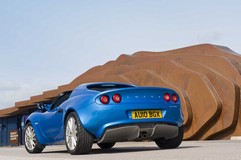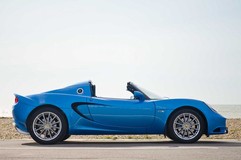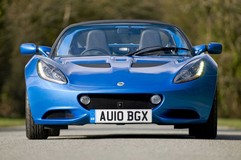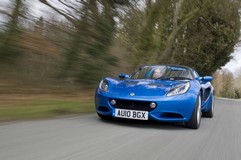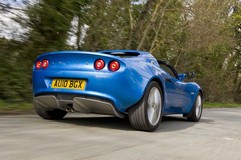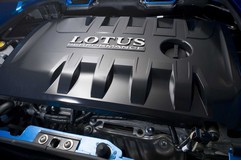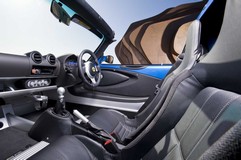Driven: New Lotus Elise 1.6
Brett Fraser finds out if the 'down-sized' Elise has lost its mojo...
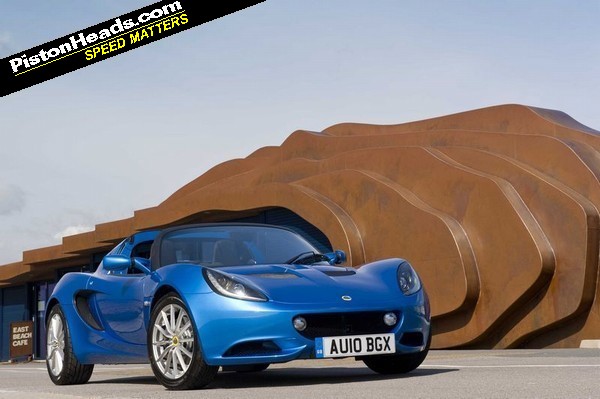
So, does the new car utterly betray the whole Elise ethos? Lotus would like to persuade us that this isn't the case, of course. By standards other than Lotus's own, even at 876kg (in basic trim) the Elise remains a comparative lightweight. Parry that assertion with the fact that the S1 had a quoted weight of less than 700kg and the response is two-pronged: firstly, that original weight claim was a 'dry' weight, the Elise minus all its fluids, whereas the new car's is a proper 'kerb' weight with all fluids in situ including a full tank of fuel and a 75kg human aboard; secondly, the new Elise has to accommodate all manner of mandatory safety equipment that does it no favours on the scales and from which the S1 was immune. They've got an answer for everything, those Lotus chaps...
Including a reason for the cruise control and parking sensors - they're what Elise customers have been asking for. Apparently we all adore the concept of a stripped out sports car, but when confronted with the options sheet many of us become afflicted by a nervous tick, splashing ink liberally into those expensive little boxes. Besides, say Lotus folk, most of the options weigh little or nothing, so stop fretting. As for the latest additions to the options list, I think we can safely blame the Americans. Okay, rant over. But as an ex-Elise owner, it's only because I care...
As was the case for the change between S1 and S2, the 2011 model year Elise's facelift - which applies to the R and supercharged SC, as well as to a new entry-level model - is an in-house production courtesy of Lotus Design. Although Lotus couldn't justify a complete re-skin this late in the Elise's life, a fair amount has been changed, including the front clamshell, inspection panels and bumper, while at the rear there are a new engine cover, rear bumper and diffuser. The new headlights incorporate LED daytime running lights and LED indicators and create the biggest, most immediate visual difference between the newcomer and its predecessor. The Elise's two alloy wheel designs are new, too, and can be painted black along with the rear diffuser, as part of the optional 'Black Pack'.
While plenty of other sports car makers are increasing the size of their engines, for the base model Elise Lotus is bucking the trend, for the first time ever offering the zippy little icon with a 1.6-litre motor. Once again it's a Toyota-sourced unit (built in Britain!), answering to the snappy title of 1ZR-FAE. It's slightly taller and heavier than the engine it replaces, thanks to a fancy valvegear arrangement Toyota calls Valvematic that works in tandem with the regular dual VVT-i (variable valve timing) system carried over from before.
Valvematic is a sophisticated system that instantly and continuously varies the amount of valve lift to more precisely and efficiently control the volume of air entering the combustion chamber. The system eliminates the need for a separate throttle mechanism as the air control takes place directly at the entrance to the cylinder. To this Lotus has added its own engine management and exhaust systems to suit the character of the Elise, with the upshot that the new 1.6-litre engine produces the same 134bhp as the outgoing 1.8-litre lump: torque, however, drops off from 127lb ft to 118lb ft.
Understandably the Lotus PR machine glosses over the torque loss, preferring to highlight the fact that thanks to the new engine's greater efficiency - and with a little help from a new six-speed gearbox for the entry-level car - the Elise produces just 149g/km of CO2 emissions. Perhaps of more tangible value is that the Combined fuel consumption figure now stands at 45.0mpg, which for a smile-a-mile sports car is pretty darned impressive.
On the other hand, if you want great fuel economy, buy a diesel - you buy a sports car for its performance, not its parsimony.
Against the stopwatch the new £27,450 1.6-litre Elise is pretty much on the pace of the 1.8 - it hits 60mph from rest in 6.0sec rather than 5.8sec and has the same 127mph top speed (despite being 4% more aerodynamically efficient). Out on the road, though, it seems you need to work the engine much harder than before. Not that it's an onerous task, granted, but below 4000rpm there's a laziness I don't recall from the 1.8; throttle response is dull, particularly if your foot isn't flat to the floor.
Above 4000rpm the Toyota motor finally gets a grasp of what's required of it and the revs pile on enthusiastically; beyond 5000rpm the induction system exercises its singing voice and before you know it you've stuttered into the 7000rpm rev limiter, having noticed the red lights in the tacho warning of its arrival but then had little time to react to them. It's a real shame there's not more fizz to the engine lower down the range, to make the Elise feel as thrilling as it putters through traffic as it does on clear roads; one of the great joys of this car has always been that you don't need to go bananas to get a buzz out of it. To be fair, the test car's engine had few miles on it, so you'd hope that in time things would loosen up a bit.
With the rest of its underpinnings largely unchanged, it's no surprise that the 2011 model year Elise is as brilliant to drive as ever, like connective tissue between you and the road. For a road car its chassis dynamics - the way it responds instantaneously to your steering inputs, reacts in neatly measured terms to changes in direction and differences in road surface, grips so ferociously - remain outstanding. No wonder that to date Lotus has sold 30,000 Elises; needless options notwithstanding, I'd still love to own another one.
Gassing Station | General Gassing | Top of Page | What's New | My Stuff

